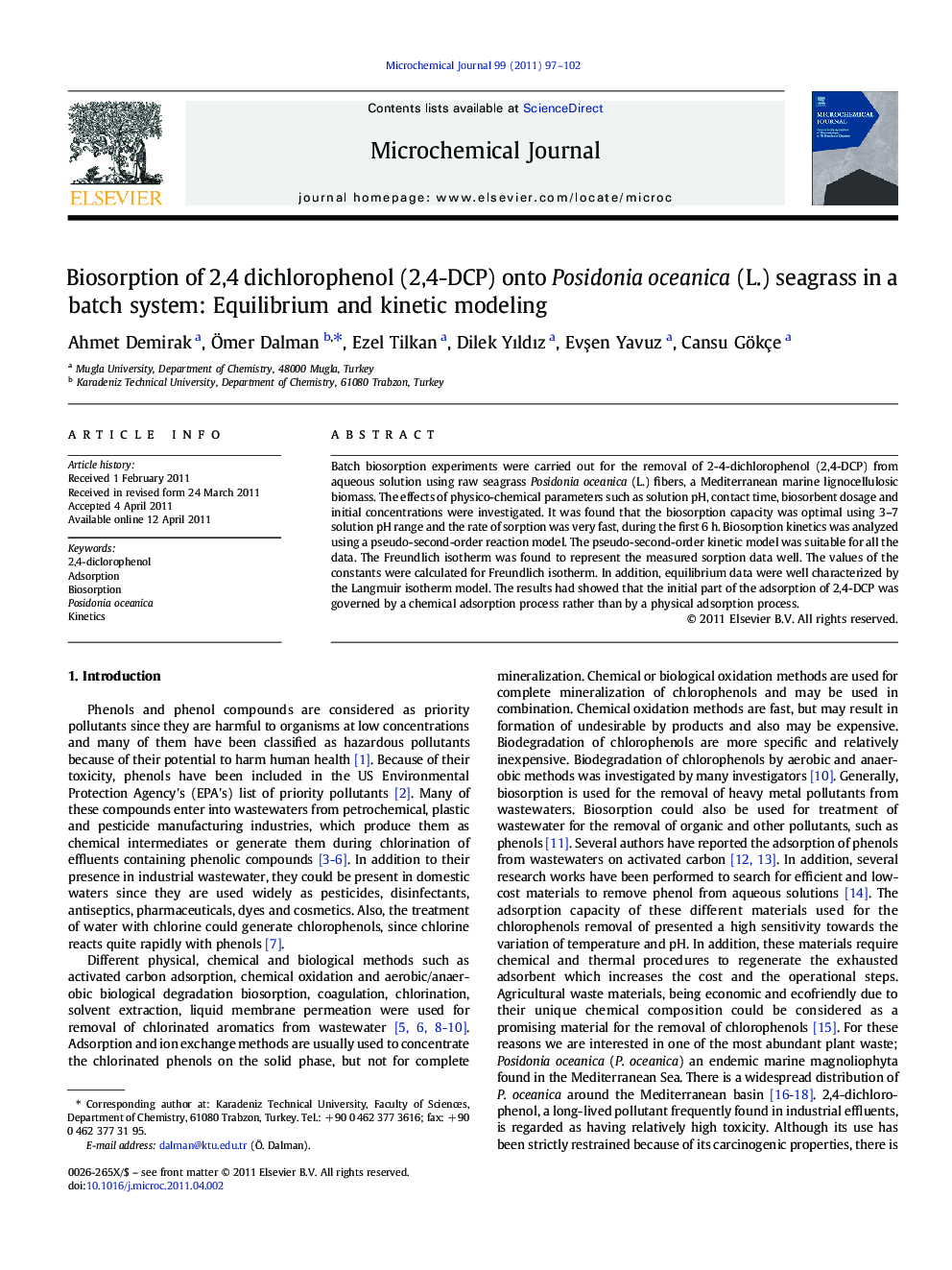| Article ID | Journal | Published Year | Pages | File Type |
|---|---|---|---|---|
| 10556814 | Microchemical Journal | 2011 | 6 Pages |
Abstract
Batch biosorption experiments were carried out for the removal of 2-4-dichlorophenol (2,4-DCP) from aqueous solution using raw seagrass Posidonia oceanica (L.) fibers, a Mediterranean marine lignocellulosic biomass. The effects of physico-chemical parameters such as solution pH, contact time, biosorbent dosage and initial concentrations were investigated. It was found that the biosorption capacity was optimal using 3-7 solution pH range and the rate of sorption was very fast, during the first 6Â h. Biosorption kinetics was analyzed using a pseudo-second-order reaction model. The pseudo-second-order kinetic model was suitable for all the data. The Freundlich isotherm was found to represent the measured sorption data well. The values of the constants were calculated for Freundlich isotherm. In addition, equilibrium data were well characterized by the Langmuir isotherm model. The results had showed that the initial part of the adsorption of 2,4-DCP was governed by a chemical adsorption process rather than by a physical adsorption process.
Related Topics
Physical Sciences and Engineering
Chemistry
Analytical Chemistry
Authors
Ahmet Demirak, Ãmer Dalman, Ezel Tilkan, Dilek Yıldız, EvÅen Yavuz, Cansu Gökçe,
